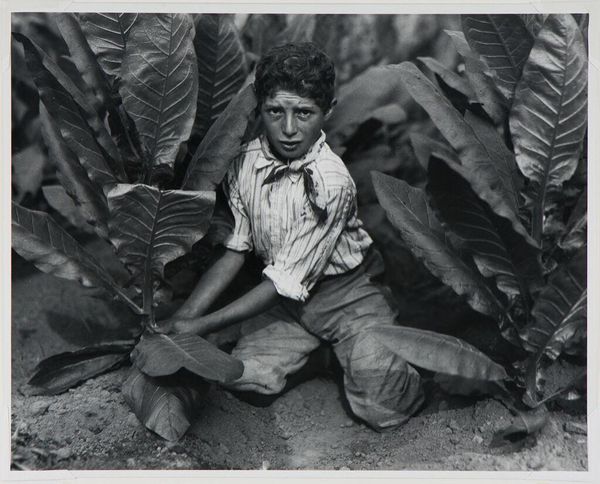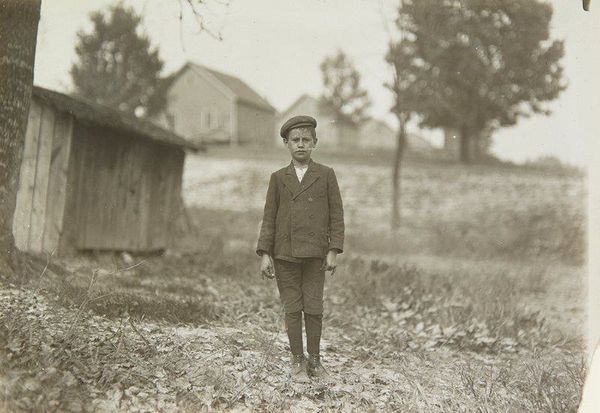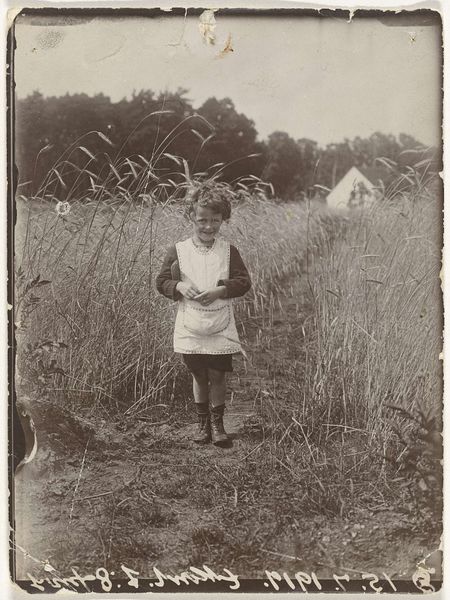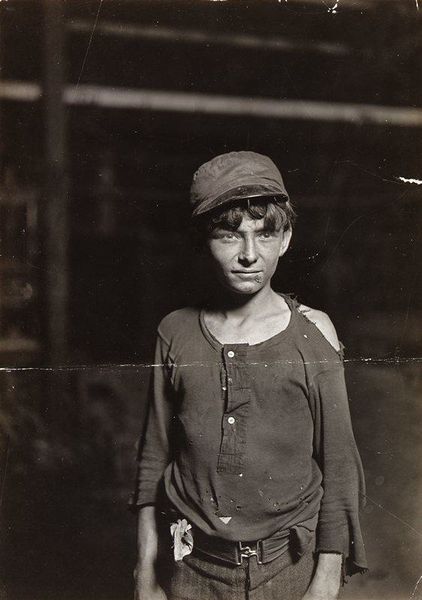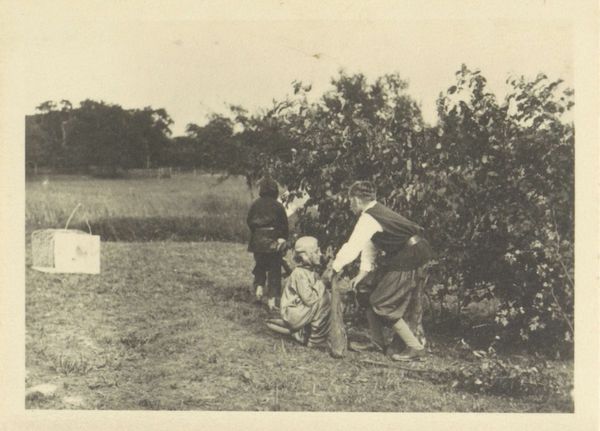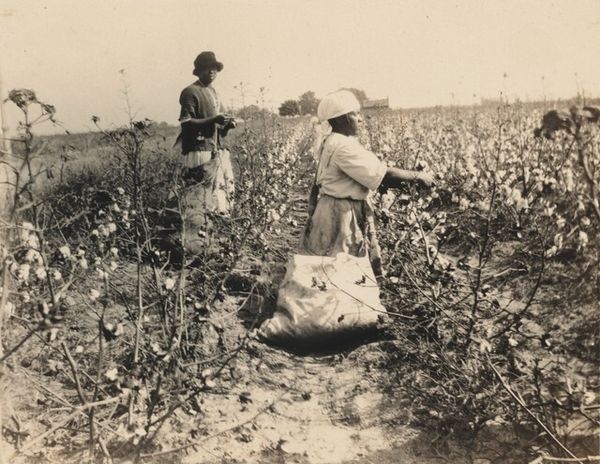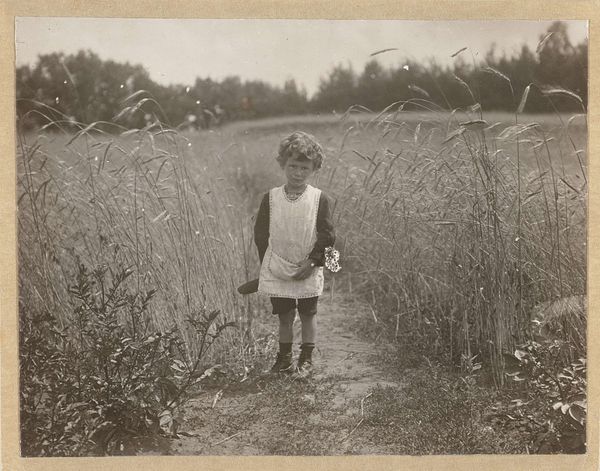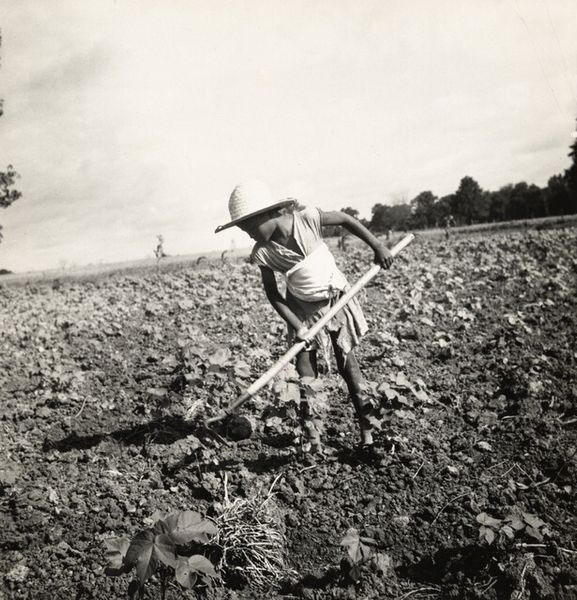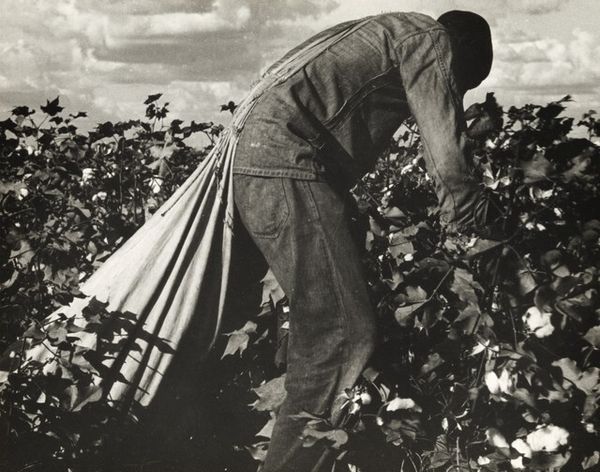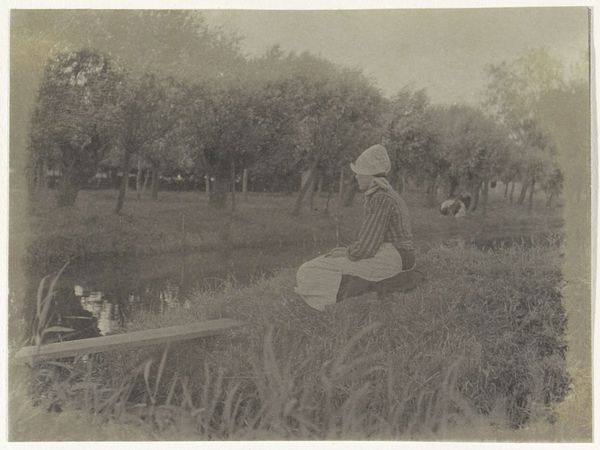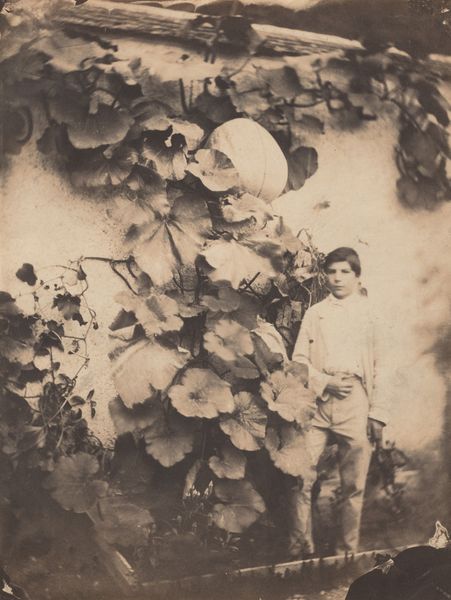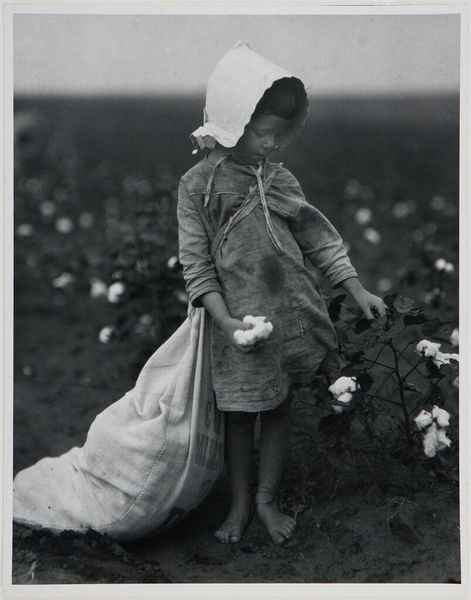
Dimensions: 4 1/2 x 6 9/16 in. (11.43 x 16.67 cm) (image, sheet)
Copyright: No Copyright - United States
Curator: This is an untitled photograph by Lewis Hine, created in 1909, and currently held at the Minneapolis Institute of Art. It’s a gelatin-silver print. What are your initial thoughts? Editor: A stark stillness. The somber monochrome imbues the scene with a quiet intensity, despite the rural setting. It reminds me of a particularly subdued Dorothea Lange. Curator: The composition is striking. Notice the way the photographer utilizes a central subject—a child. His hat overshadows his gaze; framing it so he looks directly at the viewer. Observe also how the lines converge. Do you note the implied narrative? Editor: Certainly. The berry plant, the child's posture, and the woven baskets are visual signifiers laden with cultural weight. The child becomes a symbol for child labor, particularly poignant in this historical context. His weary eyes—a vessel brimming with the stories of the exploited. Curator: Precisely. Hine, aligned with the Ashcan School movement, consistently presents reality. His compositional technique is geared to evoke pathos, observe his skillful play of light and shadow, and the carefully constructed focus of foreground versus background. Editor: Beyond the explicit documentation of a social ill, the berries themselves carry significance. Berries often represent abundance and the fruits of one's labor. Yet here, that symbol is tragically inverted; the "fruit" benefits others, not the child who picks them. Curator: Indeed, Hine used visual and semiotic vocabularies to push narratives. The use of the gelatin-silver printing technique produces tonal gradations from deep blacks to radiant highlights; notice especially how it casts light on his worn expression. A direct connection is fostered via strategic compositions like these; in doing so, the plight becomes palpable. Editor: Absolutely. And by stripping the scene of color, the viewer is forced to confront the essence of the child’s experience. The monochrome aesthetic underscores the bleakness. What started as seemingly artful photograph now represents a somber visual protest. Curator: It's a testament to Hine's craft—how formal decisions become deeply embedded with societal critique. This viewing has highlighted those choices; it makes you examine how technical components such as monochromaticity can amplify symbolic layers, and I hadn't appreciated this piece nearly as deeply before this moment. Editor: Agreed. These layers remind us to appreciate the interplay between artistry and social advocacy—in ways that provoke action.
Comments
minneapolisinstituteofart about 2 years ago
⋮
Lewis Hine was a documentary photographer, educator, and social reformer. Trained in sociology, Hine taught at the progressive Ethical Culture School in New York City before turning his attention to photography. As a photographer for the National Child Labor Committee (NCLC), Hine traveled the United States to document children in unsafe working conditions in factories, mines, fields, and city streets. Over ten years, he created an indelible record of the human cost of an exploitative labor market, documenting the tired faces of children at the end of their shifts, or even children mutilated by industrial machinery. These disturbing photographs were used in publications and presentations created by Hine and the NCLC, and ultimately promoted sweeping policy changes designed to protect children.
Join the conversation
Join millions of artists and users on Artera today and experience the ultimate creative platform.

